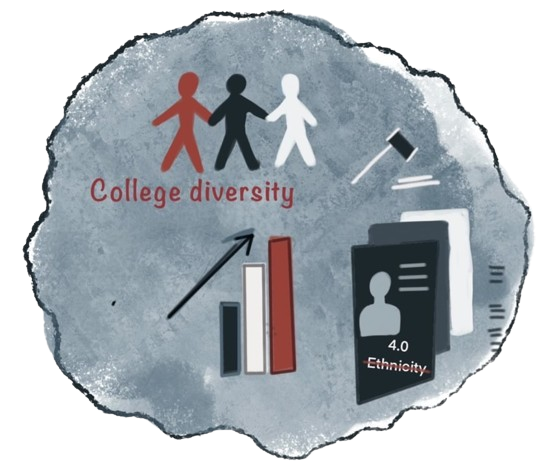Staff Editorial: Lagging Behind in Languanges
High school students lack adequate skills in foreign languages, making bilingualism rare in America
When you walk through the hallways of Woodbridge High, you can hear many different languages spoken by students from around the world. Unfortunately, the linguistic diversity in our country is often not as readily celebrated as it is at our school. In the U.S., bilingualism is not an emphasized aspect of the educational system, and there is little appreciation for foreign languages and mother tongues. We should be celebrating and encouraging the process of language learning, but instead, too many students do not take advantage of the opportunity to fully learn other languages.
The lack of bilingualism among students is a national problem, setting them behind most developed nations. Only 20% of American students K-12 took foreign language classes in 2015, while 92% of Europeans took a foreign language. High school introduces foreign language classes, but this alone is insufficient. While learning foreign languages in high school introduces students to diverse cultures and mentalities, the learning approach and lack of student passion impede fluency.
The strategy used in many language classes contributes to this problem. Most high school language curriculums use the Grammar-Translation method, translating foreign languages to native ones while memorizing conventions and vocabulary. However, immersion, or constantly hearing a language, quickens this process. Although Irvine teachers might find this method challenging to apply, incorporating immersive experiences by emphasizing comprehension and communication skills may be more effective.
The methodology isn’t the sole culprit; age is also to blame for our lack of bilingualism. An MIT study showed that 10-year-olds learn languages easier than teenagers because children notice subtle linguistic distinctions. Yet Americans often start second languages in high school, significantly past the prime linguistic learning age. From a Pew Research Center poll, Europeans start foreign language classes at ages six to nine. If American schools offered younger students foreign language experiences, there would be more bilingual students.
Additionally, students should view language classes as an opportunity to expand their understanding of the world rather than merely to fulfill a graduation requirement. Since the U.S. does not view languages as a practical skill, many lack passion and commitment to better their knowledge, when in fact, learning a new language could prove to be an enriching and diversifying experience.
While learning a new language in high school can present students with an uphill battle, this unique opportunity expands their understanding of the world and improves thinking patterns. We are grateful to be a part of a school with a unique, multilingual environment where it is common to meet students with mother tongues from around the world. This has exposed us not only to different mediums of communication, but also to diverse cultures and customs, making us more empathetic and open-minded.
While students may not become fluent in a new language during high school, pushing oneself to achieve a greater understanding of other languages should be encouraged. The key towards a nation of bilingualism starts in the classroom, where we all must come together to connect with the modernized world.










